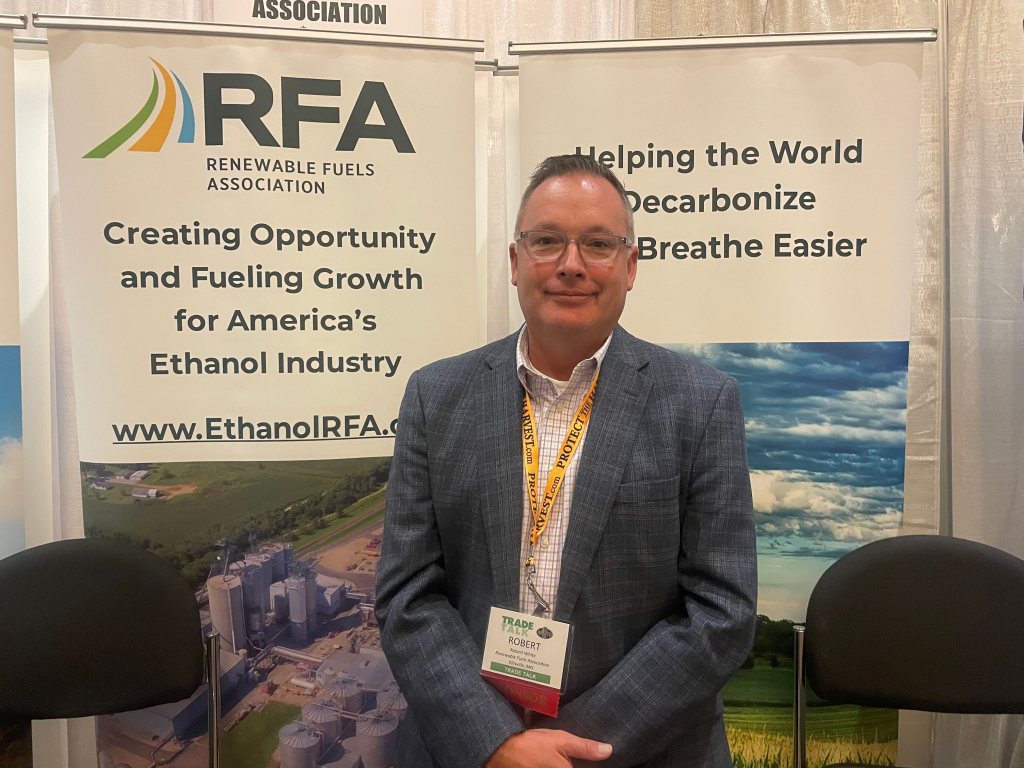
Associate Farm Editor Reagan Calk is talking with the Vice President of Industry Relations at the Renewable Fuels Association, Robert White, about the ethanol industry.
Ethanol has many benefits, White explained, as it is a clean burning fuel and is low carbon.
“You have less emissions, and it is a renewable product we can make,” White said. “It is not a limited supply. At the end of the day, it is a domestic product. It is something we make here in the United States. As we watch the turmoil around the globe, it is more important to have energy security and energy independence, especially when it comes to our energy needs.”
With Carbon emissions becoming a bigger topic of discussion, White said Ethanol has a place at the table when it comes to reducing those emissions because it is a low-carbon fuel.
“Unless it says otherwise, everything you are using at the pump today is ten percent ethanol,” White said. “There are opportunities to move that to E15, which is 15 percent ethanol.”
E15 has been approved for all vehicles made after 2001 and flexible fuel vehicles, White said, which is almost 97 percent of all vehicles on the road today.
“What we are seeing is more and more people adopting E15 because it is a higher-octane fuel, at a lower cost that any car can use,” White said.
After E15, White said, comes E85, which is 85 percent ethanol and can be used in flexible fuel vehicles only. The cost of E85, White added, is usually between 20 and 30 percent less than gasoline.
When the EPA approved E15, White said it was placed into a different approval slot, separating it from E10 in the summer months. Because of this, White said the marketing opportunities for E15 were very limited.
“For example, in Oklahoma, from June 1 to September 15, you technically could not sell E15 because of the base gasoline, and the way the rules were written would preclude it,” White said. “What is ironic is E15 has lower emissions than E10, so the agency that is in charge of reducing our air quality concerns is precluding a cleaner fuel from being in the marketplace.”
White said there is legislation being worked on to correct this issue.
One piece of legislation White said he is pleased with is the Flex Fuel Fairness Act which is focused on putting flexible fuel vehicles back on the market.
“It really puts flex-fuel vehicles back into the production line at the automakers,” White said. “The reason they have gone fully EV (electric vehicle) in many cases is because they are being paid to do it. They are getting fuel economy credits, they are getting tax credits, and they are getting other incentives from the federal government, and flex-fuel vehicles used to enjoy some of that fuel economy credit.”
It is going to take a while for electric vehicles to gain enough traction to increase usability, White said, so in the meantime, a lower-carbon fuel could be utilized through flexible fuel vehicles.














